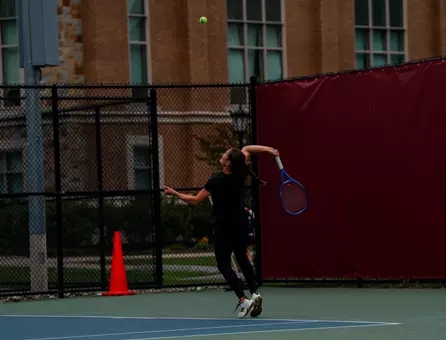Nigel Bentley Coaching Tips
August 31, 2000 | Women's Tennis
Aug. 31, 2000
How do most points end in tennis?
If you said errors or mistakes you are correct!
To my knowledge, there never has been a perfect error free match played and probably there never will be. Errors are part of the game. However, there are different types of errors, some positive and some negative.
Obviously any error can cost you a match and in that sense all errors are negative. Reducing mental errors in terms of positioning and tactics are a goal, but physical errors are going to occur. The keys are, do you have the ability to self-coach yourself and correct errors? And are the errors you are making occurring within a high percentage game plan?
Perhaps the worst error is hitting into the net, as it negates the ball from getting into play. Furthermore you are providing a physical and mental rest period for your opponent. Also you will not get the benefit of any close line calls or wind blown balls. Hitting a ball beyond the baseline is closer to your target zone, particularly in singles where you want depth.
Depth is an important tactic. Depth forces shorter balls from your opponent, it keeps your opponent back, and it gives you more time to recover. If you miss a shot long it is not necessarily a bad thing.
In order to reduce unforced errors, thus giving your opponent free points, hitting to safe targets is critical. Too often players try to hit to an open court or away from their opponent but these may not be safe target areas. The sight of an open court is tempting as you may feel you have an opportunity to pressure your opponent, but be smart using high percentage shots. A successful approach can be to hit through your opponent trying to force an error as opposed to away from them where you try to hit a winner.
Other methods to apply pressure on an opponent, within a high percentage game plan, include consistency, accuracy, variation of spins, change of speeds, change of height, controlling the time of the match, and tactics.
Generally, errors can be classified into three categories: physical, mechanical, and mental. A player's ability level correlates with what type of error is being made.
The more novice player (2.5-3.0) has trouble with physical problems. Often late racket preparation, weak court coverage, and slow ball awareness are areas this player needs to practice. An intermediate player (3.5-4.0) has difficulty with mechanics. Attempting to obtain greater consistency, accuracy, spin, depth, and placement are challenges this player faces. And the more advanced player (4.5-5.0) must conquer the mental side of the game.
Mental toughness is such a huge part of the game and must be practiced. Also understanding the concepts of high percentage tennis with good shot selection are vital for the advanced player.
Errors are part of the game. However, what types of errors you are making are very important in determining if you are playing smart. Players should be encouraged to play the proper shot at the right time regardless of the outcome.
(Serving Notice credits Master USPTA Professional Eduardo Garcia for information contained in this article)
(Nigel Bentley is the Concord Country Club Director of Tennis and the Boston College Women's Tennis Coach)


















